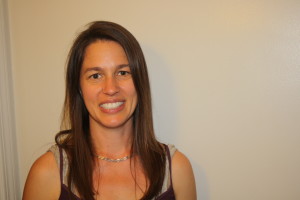Last year, my son Colin started kindergarten. For the first couple of weeks, I was dying to hear what he’d learned. Was he writing novels? Translating a bit of French? Maybe splitting a couple of atoms—while wearing safety goggles—the teacher would make sure he wore his safety goggles, wouldn’t she?
I am lucky that Colin loves to talk and was happy to share about his days. In the first week, Colin learned (drum roll, please) that the teacher has a big dog, that she has all brothers and that she owns an R2-D2 alarm clock.
“Anything else?” I ask.
He thinks.
“She also babysat her mom’s cat.”
“Okay. But anything else?”
More thinking.
“She used to live in Alaska.”
The transition to getting up early is painful for us. Annabelle cries. Colin cries. I cry. But it’s all worth it, what with Colin absorbing knowledge like a sponge.
Once I start volunteering in his classroom, I am happy to see that far more is being taught in class than Colin reported. One day, the teacher is having the students draw a picture and then write a sentence about their drawing by completing the prompt “I see a…”
One student wants to write “I see my Mom.” Another says, “I see a train.”
“What are you going to write?” I ask Colin.
“I see a big rig monster truck driving down the road with boxes of toy cars.”
I leave him to that.
Annabelle, then two-years-old, says she is going to write “I see a school bus.” At two-years-old! The wonders of school. If you write the standards, they will meet them.
I work my way around the room, helping kids sound out words, and they’re all doing great. There’s a high school helper who’s writing the words for the kids to trace. Her method is much faster than mine, but I’ve already started the sounding out thing, so I stick with it.
I sit down beside a little boy I’ll call Greg. He wants to write, “I see a spider.”
“Do you want to do it yourself, or do you want me to write it and you trace it?” I ask because the student helper is causing me to question years of pedagogy.
“I want to do it myself,” he says.
Ok, I’m game. I sound out each letter of “spider,” and he laboriously writes the letters. We’re on a roll until we get to the last letter.
“Rrrr,” I say.
“I don’t know what that is,” he says.
“It’s an ‘r’,” I whisper because the teacher isn’t around, so I think I can get away with it.
“Oh. I don’t know how to make an ‘r’.”
I’m resourceful. I’m a problem solver. So I pick up the name tag sitting next to me. It says “Parker.” I cover all of the letters except the last one and show him what an “r” looks like.
He nods and, wordlessly, starts erasing all of the letters he just wrote.
“What are you doing?!” I ask. I want to remain calm, but that’s five minutes of our lives that we can never get back.
But nothing I say can stop him. This kid is on an erasing mission.
The student helper nods. “Sometimes I just want to erase everything and start over too,” she says in a happy, sing song voice. Easy for her to say. She’s relaxing while a table full of kids traces her letters.
Then, after Greg’s done eradicating his letters and my confidence, he starts writing “P…A…”
“What are you writing?!” Me again. “Are you writing ‘Parker’? Do you want to say ‘I see a Parker’?”
“No.” He’s very serious. “I want to say ‘I see a spider’.”
“That’s what you had, see? You were writing that.”
It’s still there, faintly, underneath the Pa, because erasing isn’t a common core standard until third grade.
Greg nods, erases the “Pa,” and order is restored in the world again. I sound out each letter of spider for him, and he makes it through to the end. The teacher hangs it on the wall, and we both live happily ever after.
Meanwhile, I return to Annabelle. She’s made a bunch of scribbles but no sentence, the slacker.
Next I check on Colin, who’s written “I see a big rig.” He looks at me.
“Okay, now how do I write ‘monster truck driving down the road with boxes of toy cars’?” he asks.
“You put a period,” I tell him.
Kirstin Odegaard runs the Benicia Tutoring Center. Read and comment on her writings at kirstinode.wordpress.com.







Leave a Reply